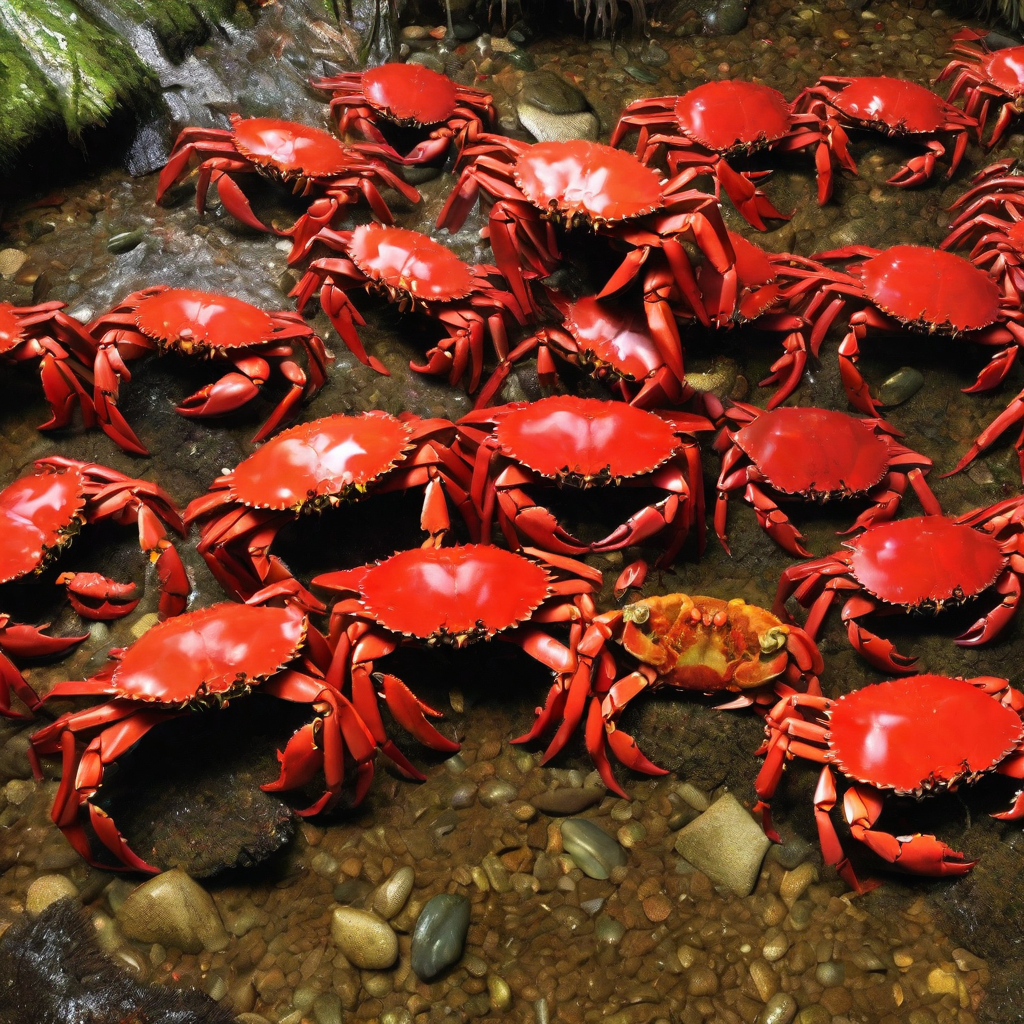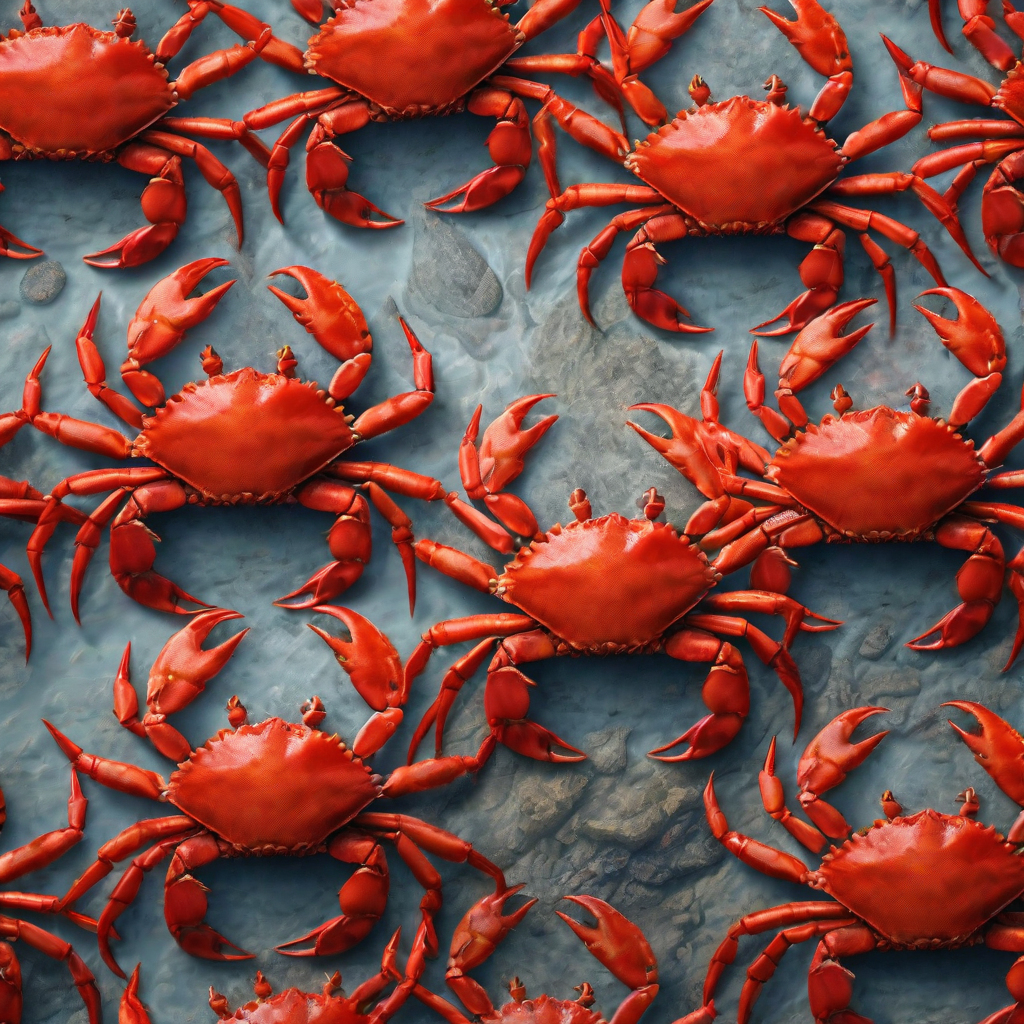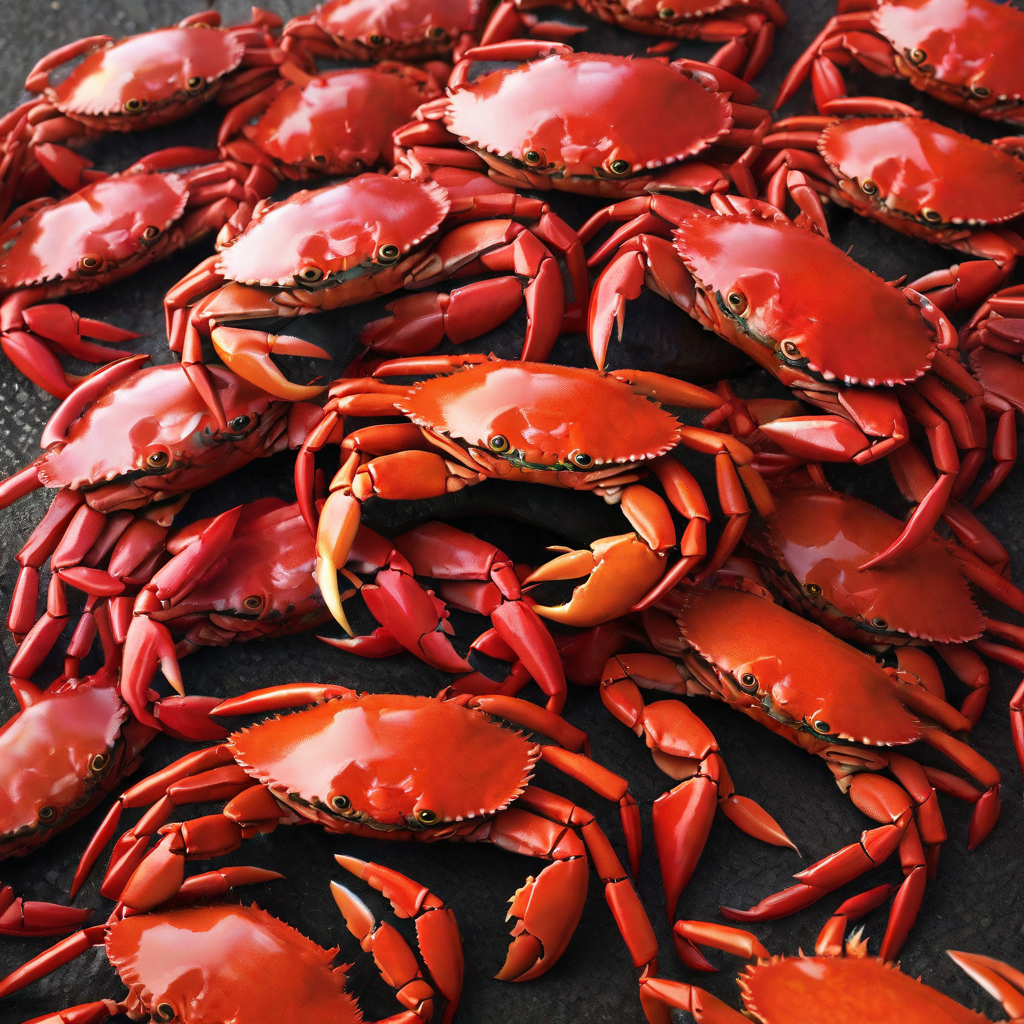Chapter 3 Red crab migration AN EXPERIENCE IN Kavieng, Papua New Guinea
The journey can be long and arduous, and unfortunately, many crabs perish along the way. The red crab migration is an extraordinary natural phenomenon, and I consider myself fortunate to have witnessed it firsthand. This annual event takes place on the east coast of New Ireland, PNG and Christmas Island in Papua, where millions of red crabs embark on a remarkable journey from the rainforest to the ocean for breeding purposes. Despite the challenges they face, including the loss of numerous lives, those that make it to the ocean are rewarded with the opportunity to mate and generate thousands of offspring. Truly, the red crab migration is a breathtaking spectacle, and I feel privileged to have experienced this awe-inspiring phenomenon.
The red crabs of New Ireland are a distinct species of land crab endemic to the island of New Ireland in Papua New Guinea. Sporting a vibrant red coloration, these crustaceans can reach lengths of up to 8 cm. Flourishing abundantly in the jungles of Papua New Guinea, they serve as a vital food source for various creatures, including humans.
The red crab migration, one of the largest mass migrations of land animals worldwide, is an astounding natural phenomenon. Each year, millions, yes millions of red crabs depart from their rainforest homes, trekking towards the shoreline to mate and lay their eggs. Their journey is grueling and perilous, with numerous casualties along the way. Nevertheless, those that reach the shore are rewarded with the chance to procreate, perpetuating the cycle of life.
Commencing in late October, the crabs begin their exodus from the rainforest, congregating along the coastline, awaiting the incoming tide. When the time is right, as the tide surges, they embark on their daring voyage across the open sea. Swimming tirelessly for days, sometimes even weeks, they eventually reach the welcoming shores.
This migration is an extraordinary spectacle, an experience that should not be missed.
Red crabs, native to the forests of New Guinea, exhibit a remarkable behavior. These crimson-hued creatures, measuring up to four inches in length, engage in an annual migration during the wet season, venturing from the forest to the sea for mating purposes.
The motivations driving this migration are multifaceted. Some crabs undertake this arduous journey in search of new food sources. Others seek refuge from predators, while some are driven by the need to find potential mates.
In December 1979, I had the privilege of witnessing a crab migration in Kavieng, Papua New Guinea. The sight of countless crabs moving in unison left an indelible impression on me. The resonating click of their claws against the ground still echoes in my memory.
The journey from Kaut to Kavieng was undoubtedly unforgettable. The roads teemed with millions of red crabs, posing a challenge to avoid inadvertently harming them. Despite this obstacle, the captivating scenery and the sheer magnitude of the experience made me appreciate the blessings bestowed upon me.
We halted our vehicle, mindful of not crushing the crabs beneath the weight of our truck tires. Witnessing the migration of these remarkable creatures was an awe-inspiring encounter. Although, as we resumed our journey, the unavoidable sound of crushed crabs under the car tires was disheartening. The sheer abundance of crabs made it impossible to prevent such unfortunate incidents. We paused for more than twenty minutes, surrounded by the jungle, before finally reaching our destination. The red crab, a stunning creature, was not to be harmed.
It was a breathtaking sight, a manifestation of Allah's wonders. I was informed that the phenomenon of red crab migration is also observed on Christmas Island in Western Australia. The migration of Christmas Island's red crabs is an astounding natural spectacle. Every year, millions of these crimson creatures migrate from the forest to the sea for breeding purposes. This arduous journey is fraught with perils, as the crabs must navigate roads and open areas, leaving them vulnerable to predators. Yet, driven by an unyielding determination, thousands of crabs successfully complete the pilgrimage to the sea annually. The Christmas Island red crab migration serves as a testament to the awe-inspiring power of nature.

.jpeg)





